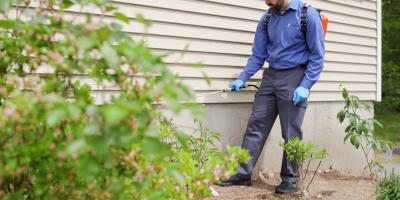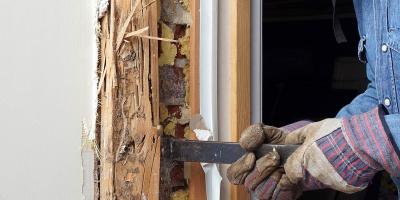Those Moths in the Restroom May Not Be Moths at All…

We’re all pretty familiar with various moth species that can become household pests, namely clothes moths found in our closets and meal moths making themselves at home in our kitchens. But, what about those tiny gray ones congregating in your restroom?
It might surprise you to know that those “moths” aren’t really moths at all but are commonly mistaken for them. In reality, these non-biting gnats are known as drain flies. The good news is that if you discover drain flies in your bathroom, there are certain tried-and-true DIY tactics that you can do to get rid of them.
Unlike other pest problems, you typically won’t need professional pest control assistance to defeat drain flies, unless you’re struggling to find their source. Here, we define the drain fly and offer some tips to help you take back your bathroom.
Defining Features of Drain Flies
Teeny little creatures, drain flies measure between ⅕-⅙ inches and are covered in dark gray hair, giving them a fuzzy appearance. Their wings are actually longer than their bodies and, when held out to the side, is the reason why drain flies resemble and are often mistaken for moths. Unlike moths, however, drain flies are not adept at flying, capable of flying only a few feet at a time.
Why Drain Flies Really Dig Your Bathroom
Well, they dig your bathroom, but really any drain will do because they tend to accumulate water and bacteria, particularly if unused over a period of time.
For instance, you might find drain flies congregating around your bathtub, shower or sinks after returning home from vacation. The tricky thing about drain flies is their ability to reproduce in 48 hours; it doesn’t take long for a few drain flies to increase and become an infestation practically overnight.
A rather disgusting fun fact about drain flies is their preferred food source, which also explains their love of drains. Drain flies like to feed on the slimy bacterial muck that accumulates inside drains, septic tanks and even atop the water tank inside infrequently used toilets.
Despite their objectionable food preferences, drain flies do not pose a health hazard to humans. They are not vectors of diseases, even though they live on and in sewage and other sources of bacteria. They are nothing more than a nuisance pest; however, in large numbers that nuisance can become rather unbearable.
Fortunately, it’s rather easy to determine where the drain flies in your home are coming from and almost as easy to get rid of them once and for all.
Defeat the Drain Flies, DIY-Style
A quick way to determine whether you have drain flies in your drain pipes is to try the duct tape test. As simple as it sounds, you just secure a piece of duct tape over your drain, sealing it off and, ultimately, trapping any drain flies that try to exit the drain. The larvae can also be detected by examining some slime from your drain -- you’re looking for tube-like larvae, which might only be found deeper in the drain or pipes.
No matter if you’ve found a few or an abundance of drain flies, with or without the signs of larvae, getting rid of them can be as easy as pouring boiling water down your drain at least once a day for a week.
It’s a good idea to start with a good cleaning of the drain using your preferred cleaning solution and a pipe brush to ensure you’re eliminating all that slime inside the drain. If the boiling water routine didn’t work, supplement it with a solution of ½ cup salt, ½ cup baking soda and 1 cup of vinegar poured down the drain and left overnight. In the morning, top it off with another pot of boiling water.
Some people will defer to chemical measures and apply products like Drano to their pipes; depending on the age of your pipes, this might not be the safest alternative and sticking the natural route can be just as effective without harming your home’s important pipelines.
In the majority of cases, getting rid of drain flies is a simple DIY project. However, if you’ve tried some of the strategies above and are still dealing with drain flies, you might need to call in a pro to help you isolate the source or hub of their activity, specifically any breeding sites.
Not sure that you’re dealing with drain flies? Email a picture to Dr. Gary, our in-house entomologist, for free identification.



